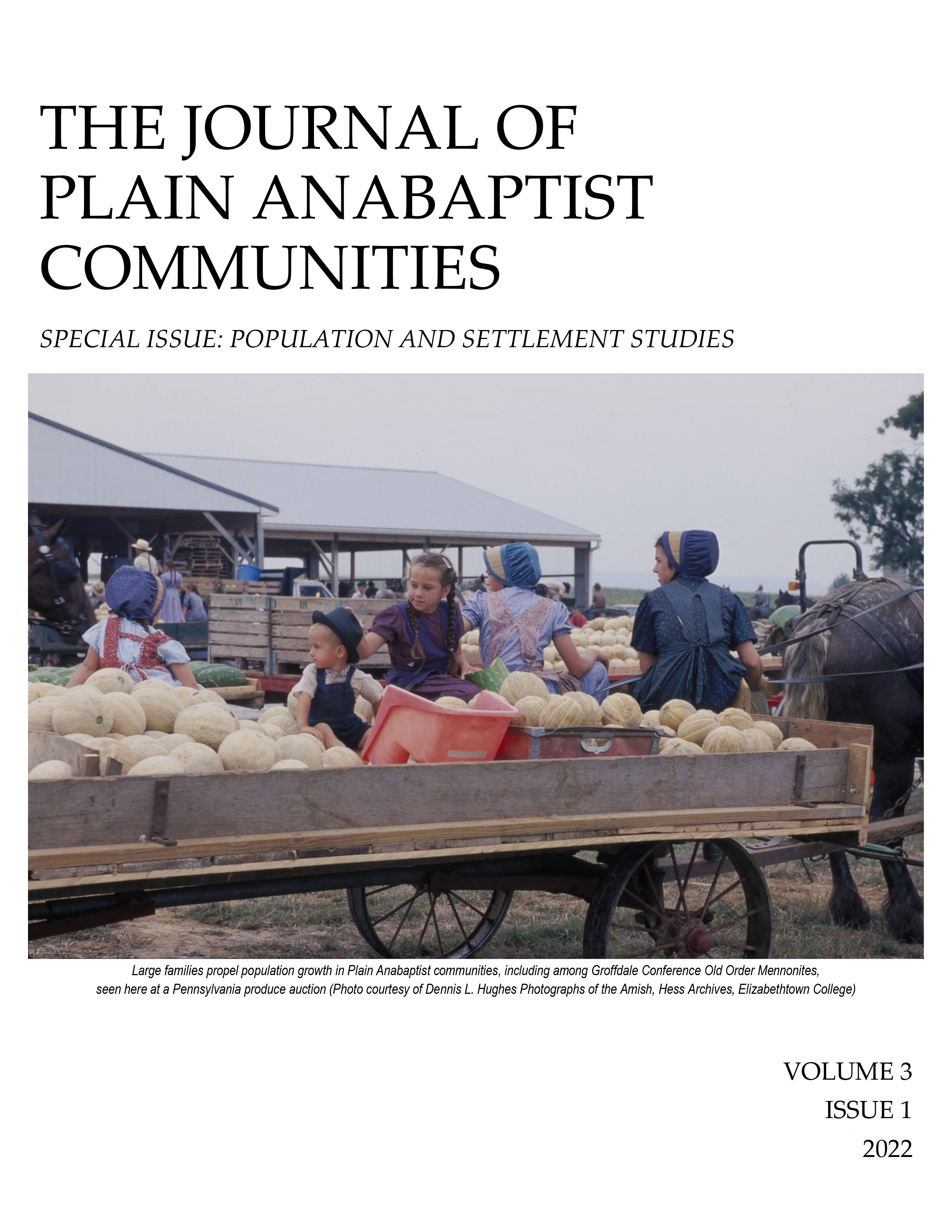Landownership within Amish Settlements in Wisconsin: An Exploratory Study
DOI:
https://doi.org/10.18061/jpac.v3i1.9084Keywords:
Amish, lands, landholdings, landownership, WisconsinAbstract
This study examines patterns of landownership within 18 Amish settlements in Wisconsin, including nine of the state’s ten largest settlements, plus nine smaller settlements. Landownership was plotted for 2,048 Amish households, who collectively owned over 115,000 acres. These households were drawn from 105 church districts, representing 58.7 percent of the state’s total. The study utilized three types of data: the recent Amish directory for Wisconsin, plat atlases showing landownership for selected counties, and detailed satellite imagery provided by Google Maps.
Average acreage per household ranged from 27.7 to 86.6 acres among the settlements. Differences in acreage owned per household appear related to occupations. Average acreage of Amish-owned land per survey section ranged from 41.6 to 201.2 acres. The maximum acreage of Amish-owned land in each settlement’s survey sections ranged from 120 to 639 acres. Amish landholdings exceeded 160 acres in 30.3 percent of the sections having Amish lands, with the settlements’ proportions ranging from 0 to 55.2 percent.
Interspersal of Amish lands among lands owned by non-Amish people is the norm, but differences in the density of Amish holdings, displayed by owned maximum acreage per section and average landholdings per section, are related to founding date and settlement size. Settlements established before the mid-1980s display greater clustering of Amish landownership. Newer settlements display many noncontiguous sections with Amish-owned lands not adjacent on their sides or corners to other sections having Amish lands. This pattern is particularly conspicuous within the Platteville-Darlington and Fennimore settlements.
Downloads
Published
Issue
Section
License
Copyright (c) 2022 John A. Cross

This work is licensed under a Creative Commons Attribution-NonCommercial-NoDerivatives 4.0 International License.

